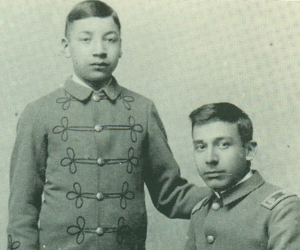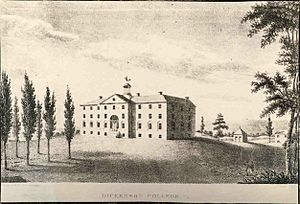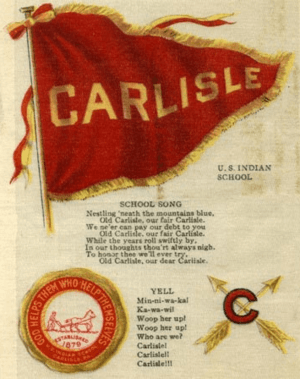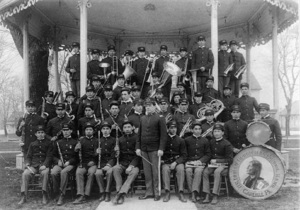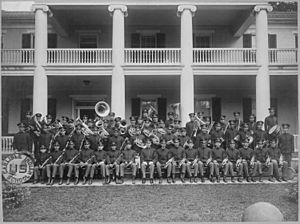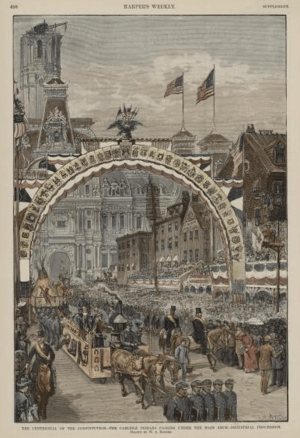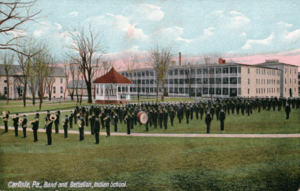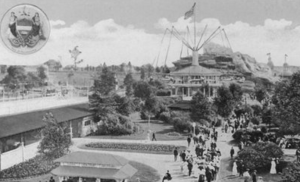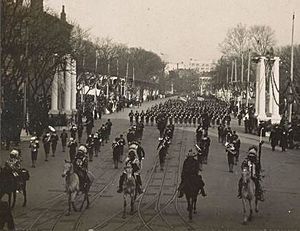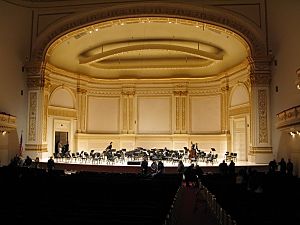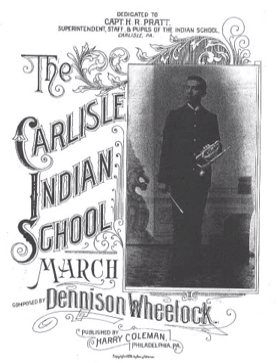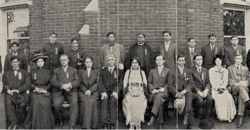Dennison Wheelock facts for kids
Quick facts for kids
Dennison Wheelock
|
|
|---|---|
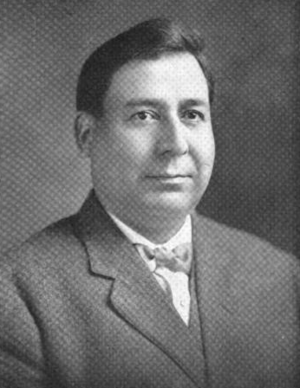
Dennison Wheelock, c.1914
|
|
| Born | June 14, 1871 |
| Died | March 10, 1927 |
| Education | Carlisle Indian School, Dickinson Preparatory School |
| Era | Progressive era |
| Known for | Musician, composer, conductor, lawyer, Native American activist |
| Children | Richard Edmund Wheelock, Paul Wheelock, Leeland Lloyd Wheelock, Louise Frances Wheelock. |
| Parent(s) | James A. Wheelock (father) Sophia Doxtator (mother) |
Dennison Wheelock (born June 14, 1871 – died March 10, 1927) was an Oneida musician, composer, and lawyer. He was a talented band conductor and cornet player. People even compared him to the famous bandleader John Philip Sousa.
Wheelock was born in the Oneida Nation of Wisconsin. He went to the Carlisle Indian School in Pennsylvania. Later, he studied at the Dickinson Preparatory School. He became the first Oneida bandmaster of the famous Carlisle Indian School Band. This band played at big events like world fairs and presidential inaugurations.
While at Carlisle, he wrote the "Carlisle Indian School March." In 1900, his three-part symphony, Aboriginal Suite, was performed at Carnegie Hall in New York City. In 1911, Wheelock helped start the Society of American Indians. This was the first national group for American Indian rights run by Native Americans. That same year, he became a lawyer. He later moved to Washington, D.C. to represent Native nations in court. He argued cases at the United States Court of Claims and the U.S. Supreme Court.
Contents
- Early Life and Music
- Carlisle Indian School Experience
- Music at Carlisle School
- The Famous Carlisle Indian Band
- Family Life
- Mentorship and Shared Ideas
- James Riley Wheelock's Contributions
- The Wheelock Family at Carlisle
- International Recognition
- Advocacy for Native Rights
- Law Career and Advocacy
- Later Years and Legacy
- Honors and Remembrance
- Sousa on the Rez Documentary
Early Life and Music
Dennison Wheelock was born on June 14, 1871. He grew up in the Oneida Nation of Wisconsin. His family was not wealthy. He had an older brother, Charles, and many other siblings.
Dennison started playing the cornet after hearing his brother Charles. A visiting musician from the Tuscarora Nation taught him how to read music. He also heard the popular band music of John Philip Sousa at fairs. Local Oneida bands were also very popular in his community.
Carlisle Indian School Experience
Many Iroquois children, including Oneida, were sent to Christian schools for education. Dennison's family name, Wheelock, was adopted by an ancestor to honor Eleazar Wheelock, who founded a school for Native Americans.
The Oneida people had many students at Carlisle Indian School. Between 1885 and 1917, over 500 Oneida students attended. In 1884, at age 13, Dennison wrote to Captain Richard Henry Pratt, the head of Carlisle. He talked about his love for music.
In 1885, Wheelock enrolled at Carlisle. He was an excellent student and a champion debater. He also sang in the choir and played the cornet very well. He graduated from Carlisle in June 1890.
After graduating, he returned to Oneida, Wisconsin to teach. But within a year, he went back to Carlisle. He then studied at the Dickinson Preparatory School. This school offered college-level education to a few selected Carlisle students. Dennison attended from 1891 to 1892.
In 1892, Captain Pratt made Wheelock his assistant. Later that year, Pratt appointed Dennison as the bandmaster. He held this important position for more than eight years, until 1900.
Music at Carlisle School
During the Progressive Era (late 1800s to early 1900s), Native American performers were very popular. They performed at world fairs and parades. Carlisle students were shown as a new generation of Native American leaders. They were seen as embracing education and modern life.
Music was a very important part of the Carlisle school program. Every student took music classes. Captain Pratt had three main goals for the music program. First, he wanted to help Native children learn European-American culture. Second, he used music to teach discipline, especially through marching bands. Third, he wanted to get good public attention for the school. This would help the school get more support and money.
The music program at Carlisle was mostly funded by private donations. Captain Pratt once said he would give students brass instruments if they stopped playing traditional "tom-toms." Soon, the school received many instruments like cornets and pianos.
While European classical music was taught, students also sang traditional tribal music. They sometimes performed this music for the community. Later, Wheelock combined American Indian music with classical European music in his symphony, Aboriginal Suite.
The Famous Carlisle Indian Band
Captain Pratt started the Carlisle Indian School band in 1880. By the time Wheelock joined, music was a big part of the school. Band members learned music by famous composers like Grieg, Mozart, and Wagner. They often performed at school events and local theaters. This made them popular with students, teachers, and local people.
In 1892, Dennison became the bandmaster. He was the first American Indian to lead the Carlisle band. After him, his younger brother James took over. Under their leadership, the Carlisle Indian Band became famous worldwide. They played at world fairs, concerts, and every national presidential inauguration until the school closed. Dennison also continued to perform as a solo cornet player. He spent the 1890s composing songs and his symphony.
By 1894, the band and the Carlisle Women's Choir performed across the East. The New York Times featured Wheelock and his band. The newspaper said few city bands were as accurate in their music. The band played Mozart, Wagner, and two of Wheelock's own pieces. These included "The Carlisle Indian School March" and "American Medley." Many important New York families attended their concerts.
Family Life
Dennison married Louise LaChapelle, a Chippewa woman. She was from the White Earth Reservation in Minnesota. Louise arrived at Carlisle two years before Dennison. They met, fell in love, and had four children. Their children were Richard Edmund, Paul, Leeland Lloyd, and Louise Frances. Their first two children were born in Carlisle.
Captain Pratt was like a mentor and a second father to Dennison. Carlisle, Pennsylvania, became Dennison's second home. Wheelock and Pratt wrote to each other for over 35 years. They trusted each other with their thoughts. Wheelock cared deeply for Pratt, his wife, and Carlisle.
Wheelock shared Pratt's ideas about Native American education. Both believed that federal Indian boarding schools were a temporary way to help Native people. They wanted to end Indian reservations and the Bureau of Indian Affairs. They focused on Native Americans gaining full citizenship and equal opportunities. They also wanted Native children to attend public schools.
James Riley Wheelock's Contributions
Under the leadership of Dennison and James Wheelock, the Carlisle Indian Band became known for its musical excellence. James Riley Wheelock was Dennison's younger brother. He graduated from Carlisle in 1896. Like Dennison, James attended the Dickinson College Preparatory School. When Dennison left his bandmaster role in 1900, James took over. In 1903, James studied music in Leipzig, Germany, focusing on the clarinet.
In 1909, James had a disagreement with Moses Friedman, who was Pratt's successor. James wanted to take Carlisle students on tour with his professional band during the summer. He thought this would be good experience. But Superintendent Friedman said no. Some boys tried to join James's band anyway. Friedman found out and punished them. The rest of the Carlisle Band refused to perform in protest. James was very angry and told newspapers that Friedman was jealous. He said the students were held illegally. Friedman said he refused permission because students had misbehaved on past tours. The story made headlines.
In 1914, a newspaper reported that James Riley Wheelock was one of the best clarinet players in Pennsylvania. During World War I, he became an officer in the U.S. Army. He led a black regimental band. After the war, he continued to lead bands, including the famous U.S. Indian Band, into the 1920s.
The Wheelock Family at Carlisle
The Wheelock family was very important at Carlisle Indian School. Many of them attended the school and were often mentioned in school publications. The Oneida people had one of the largest groups of students at Carlisle. Only the Lakota, Chippewa, and Seneca had more students. Between 1885 and 1917, over 500 Oneida students went to Carlisle.
Of Dennison's nine brothers and sisters, only two did not attend Carlisle. These were his oldest brother Charles, who also played the cornet, and his youngest half-brother, Harrison. Several of his cousins also enrolled. Dennison's younger brothers Hugh and Joel Wheelock were also talented musicians. They later led their own all-Indian bands. His sister Ida Wheelock was active in school groups. Martin Frederick Wheelock, a cousin, played American football for the Carlisle Indians.
In 1914, Dennison wrote to the school asking for his sister Martha and his son Edmund to be admitted. Edmund was born at Carlisle in 1896. He was doing well in public school in Wisconsin. But Dennison was worried about the environment there. He mentioned the many saloons in the town. Within a month, both Edmund and Martha were attending Carlisle.
International Recognition
Carlisle Indian Band's Fame
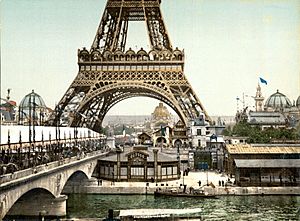
In the early 1900s, Dennison Wheelock was compared to John Philip Sousa. He was even suggested as a possible leader for the United States Marine Band. Wheelock loved Sousa's famous march music.
On October 10, 1892, the 400th anniversary of Columbus arriving in the New World, Wheelock's band marched in New York City. His 31-piece Carlisle Indian Band and 300 Carlisle students marched on Fifth Avenue. Newspapers across the country praised the students for their "intelligent faces." They especially praised the Indian band. People cheered as the band played a marching song. The Indian boys marched perfectly, with military precision.
In 1893, the Carlisle group went to Chicago for the Columbian Exposition. Newspapers nationwide reported on them. After returning to Carlisle, Wheelock started recruiting talented young Native American musicians from other schools. He also began teaching music and was called "Professor."
In 1894, Wheelock and the Carlisle Women's Choir performed across the East. In 1896, he published the Carlisle Indian School March. He also presented a piece called From Savagery to Civilization. This piece showed music evolving from "wild tom-toms" to "sweet and classic streams." This was a preview of his Aboriginal Suite, which he performed in 1900 at Carnegie Hall.
The Aboriginal Suite Symphony
In 1897, Wheelock traveled to find musicians for a new 70-piece, all-Indian student band. During this time, he finished his Aboriginal Suite. This was a full symphony with three parts: "Morning on the Plains," "The Lovers Song," and "Dance of the Red Men." Wheelock planned to perform this symphony at the Paris Exposition of 1900 and the Pan-American Exposition of 1901.
On March 28, 1900, Wheelock and the U.S. Indian Band performed his Aboriginal Suite at Carnegie Hall in New York City. A reviewer said the concert was part of a series before the band went to Paris. The band also played music from famous operas. The audience loved the concert and asked for many encores.
Wheelock once said that original Indian music is unique. He explained that it has melody and rhythm but no harmony. He believed it could be easily harmonized. He planned a composition called "the evolution of music." It would show how music grew from primitive melodies to grand opera.
Six weeks later, Wheelock's 10-month-old son Paul died. Dennison and Louise were heartbroken. The school canceled the band's trip to Paris. As a tribute to Wheelock, the National Band of France played the Aboriginal Suite for him.
Haskell Indian School Bandmaster
In 1900, after his son's death, Wheelock left Carlisle. He worked as a newspaperman and then at another Indian school. He also performed as a guest bandmaster at Willow Grove Park in Philadelphia. This park was a famous music venue. On one occasion, Wheelock attracted 70,000 people to a concert. He received a gold medal and a silver cup for his excellent conducting.
In 1903, Wheelock became the bandmaster at Haskell Indian School in Lawrence, Kansas. His work there was highly praised. In March 1904, Metronome magazine called the band "up-to-date" and "capable." They played both traditional Indian songs and classical music.
In 1904, Wheelock's Haskell Indian Band performed at the Louisiana Purchase Exposition, also known as the St. Louis World's Fair. The band played classical and popular music, along with Wheelock's Aboriginal Suite. This performance included Native dances and war cries by band members.
Around this time, Captain Pratt was forced to leave his job at Carlisle. Wheelock faced financial difficulties. He was supporting his father, siblings, wife, and son. He resigned from Haskell to find better-paying work.
Advocacy for Native Rights
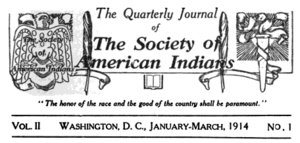
In 1911, Wheelock was one of 50 people who founded the Society of American Indians (1911-1923). This was the first national organization for American Indian rights created and led by Native Americans. The Society promoted unity among all American Indians. It was a place for a new generation of Native American leaders. These leaders were often professionals like doctors, lawyers, and teachers. They believed in progress through education and government action.
The Society held conferences, had a headquarters in Washington, D.C., and published a journal. They promoted an "American Indian Day" and fought for Native Americans to become U.S. citizens. They also pushed for the U.S. Court of Claims to hear cases from all Native tribes. The Society of American Indians was a very important group. It helped bring about major changes for Native Americans in the future.
Meeting President Woodrow Wilson
In October 1914, Wheelock hosted the Society's annual meeting in Madison, Wisconsin. In December 1914, the Society met in Washington, D.C. They were welcomed by the Commissioner of Indian Affairs. They also visited the White House to meet President Woodrow Wilson.
Wheelock presented President Wilson with the Society's request. They asked for a special group to help Native Americans gain U.S. citizenship. They also wanted the U.S. Court of Claims to hear all Native nation claims against the United States. Wheelock told Wilson that it was strange to have groups of people in the nation whose legal status was different from other Americans. However, World War I started, which delayed new laws for Native Americans.
As a lawyer, Wheelock later represented Native nations in cases before the U.S. Court of Claims and the U.S. Supreme Court.
Law Career and Advocacy
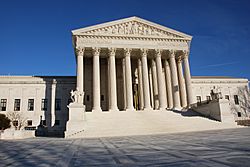
In 1910, Wheelock decided to become a lawyer. He returned to Carlisle, Pennsylvania, where he knew many professionals. He learned law by working as an apprentice in a law office.
In 1911, he finished his training and became a lawyer in Wisconsin. He set up his practice in De Pere, near the Oneida Nation of Wisconsin. Wheelock became a very successful lawyer. He represented both Native and non-Native clients. In 1915, he also led the Green Bay Concert Band.
Over the next ten years, Wheelock's law practice grew. By 1923, he focused on representing tribal nations from across the country. These included the Nisqually, Menominee, and Mohawk. Since he was often representing these nations in cases against the federal government, he moved his law practice to Washington, D.C.. There, he argued cases before the U.S. Supreme Court and the U.S. Court of Claims.
Later Years and Legacy
In 1921, Wheelock managed and led the band for the Oneida Indian Centennial Celebration. This event marked 100 years since the tribe moved to Wisconsin. His band performed classical music. Native American nations in Wisconsin set up a traditional village. They sold crafts and foods. There was also a special stage for Native music and dancing.
Wheelock continued his law practice in Washington, D.C., until he passed away on March 10, 1927. He was 56 years old. He was buried in Woodlawn Cemetery in Brown County, Wisconsin. His wife, Louise LaChapelle Wheelock, died in 1931 and was buried next to him.
Honors and Remembrance
- In 1980, Dennison Wheelock's Bandstand was rebuilt at the U.S. Army War College in Carlisle, Pennsylvania. This site is a National Historic Landmark.
- On August 14, 2003, the Green Bay Concert Band played Wheelock's Aboriginal Suite for the first time in over 75 years. This performance took place at the Oneida Nation of Wisconsin.
Sousa on the Rez Documentary
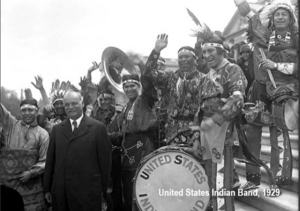
Sousa on the Rez: Marching to the Beat of a Different Drum is a short documentary. It explores the interesting tradition of brass band music in Native American communities. Many people might not think of tubas and trumpets when they hear "Native American music." But march music, like that by John Philip Sousa, has been played by Native American cultures for over a century. The Wheelock brothers helped make this music popular.


